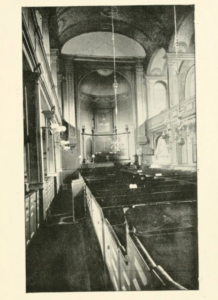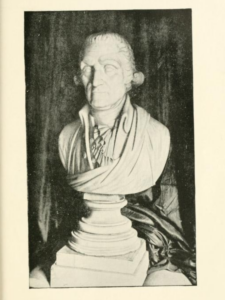The Misinformation is Coming from Inside the House
By Danielle DeVantier, Old North Illuminated Intern
In 1893, a pamphlet titled “A Visit to the ‘Old North Church,’ Boston, Mass.” was written and published by Charles Downer, the church’s sexton. As the sexton, he was an employee of the church who was charged with the maintenance of the church’s buildings and outside spaces. At the time of publishing, Downer had worked at Old North Church for twenty-three years. Given his close and longstanding relationship to the church, readers may assume that all of the information in his pamphlet is credible. However, a close reading of this piece shows that historical sources are not always as trustworthy as they appear.
Recounting Paul Revere’s Ride

Charles Downer’s pamphlet is not without merit. It includes some excellent photos that are valuable for identifying the changes that the church has undergone throughout its history. Nevertheless, there are a number of important factual errors in Downer’s retelling of the church’s history. For example, when discussing Paul Revere’s midnight ride on April 18, 1775, Downer appears to utilize Henry Wadsworth Longfellow’s 1861 poem “Paul Revere’s Ride” as fact rather than as a mythologized epic. Downer states that Revere was on the opposite side of the river that night waiting for the signal. This is how Longfellow relates the tale in the poem, but, historically, it is incorrect. Revere himself stated in a letter to Jeremy Belknap, the founder of the Massachusetts Historical Society, that he was not on the other side of the river. Furthermore, Downer exhaustively recounts the story of Robert Newman’s involvement as a lantern bearer on the night of Revere’s ride, while entirely leaving out Captain John Pulling Jr.’s role as a lantern holder. Since Robert Newman was the church’s sexton in 1775, and Charles Downer held the same role 117 years later, perhaps he was more familiar with and drawn to his story.
Lafayette and the Bust of George Washington
Other pieces of misinformation in Downer’s history of Old North Church center around an anecdote regarding the Marquis de Lafayette’s visit to the church and his remarks made about the church’s bust of George Washington. Downer wrote:

“In conversation with the Rt. Rev. Bishop Coxe, of Western New York State, he said that when General Lafayette visited the church in 1826, while admiring it, was asked by the Rev. Father Brinley if that was a good likeness of General George Washington. He very emphatically replied, while pointing to the bust: ‘Yes, that is my old friend and comrade, George Washington.’”
Downer stated that General Lafayette visited the church in 1826, but his visit actually took place in 1824 during his “farewell tour” of the United States. Downer’s narrative of the George Washington bust and Lafayette’s reaction to it differs from the account written by Bishop Coxe in an 1891 letter. Downer’s account of this event implies that Coxe was repeating something he had witnessed. However, Coxe noted that the events in question happened long ago and that he himself had not been present. Additionally, the man that Lafayette spoke with about the bust was not a Father Brinley as Downer wrote, but a Mr. Brinley.
The Challenges of Being a Historian
Charles Downer’s pamphlet is a great example of the importance of assessing the quality of historic primary sources. Downer worked at Old North Church and was closer chronologically to many of the events he mentions, but the facts within his work do not align with information in other primary sources. When reading primary sources, it is necessary to verify dates and facts, and to validate it against other trusted primary sources. We are reminded that readers should not passively take in the information presented in a source but should engage with and question the details. Active reading is important when engaging with both primary and secondary sources, as well as information found in print and online platforms.
References:
Coxe, Arthur Cleveland. 1891 letter.
Downer, Charles. “A visit to the “Old North Church,” Boston, Mass.” [Boston: s.n, 1893] Pdf. https://www.loc.gov/item/17030829/.
Paul Revere to Jeremy Belknap, circa 1798, from the Manuscript Collection, Massachusetts Historical Society Collections Online, https://www.masshist.org/database/99.
